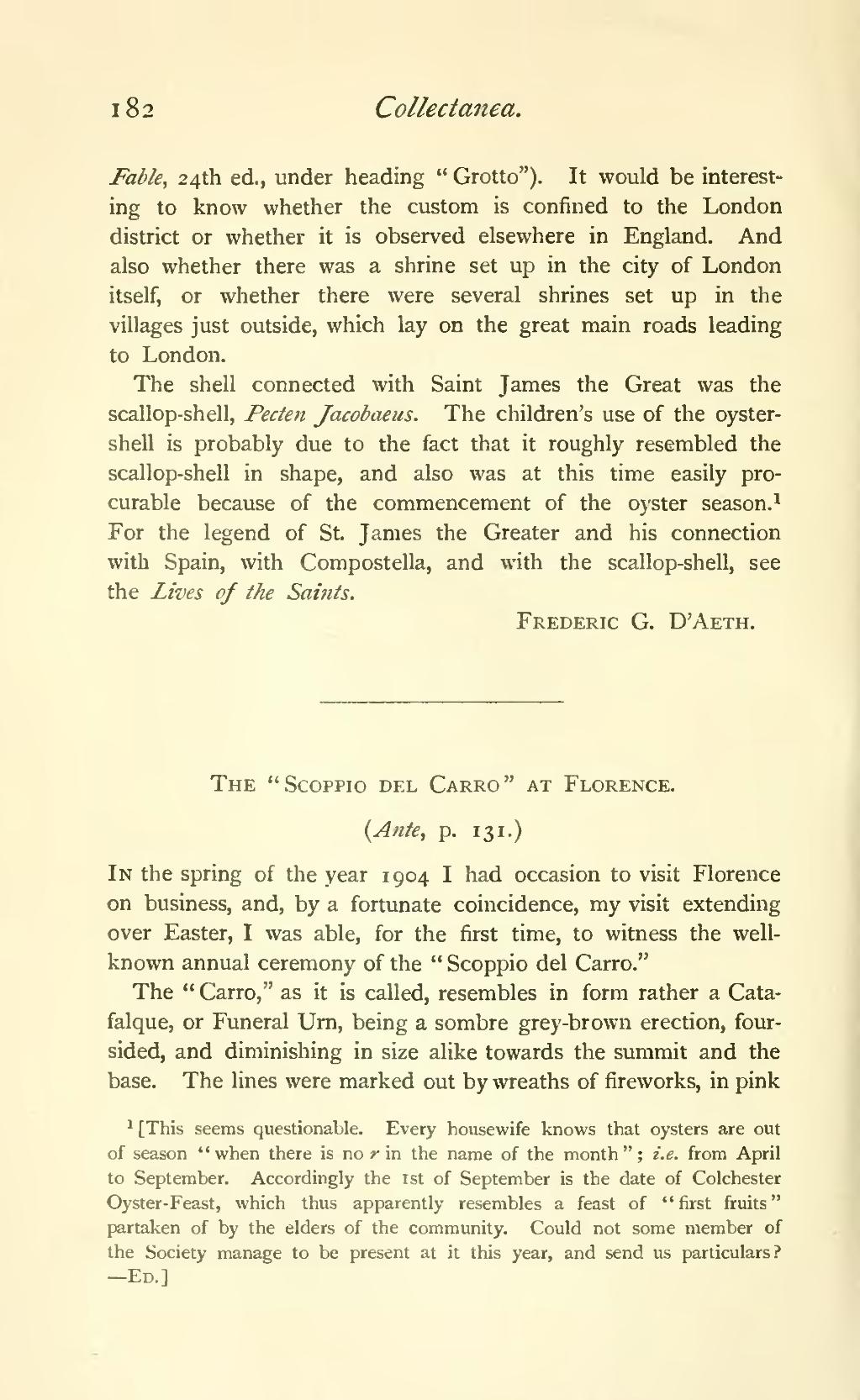Fable, 24th ed., under heading "Grotto"). It would be interesting to know whether the custom is confined to the London district or whether it is observed elsewhere in England. And also whether there was a shrine set up in the city of London itself, or whether there were several shrines set up in the villages just outside, which lay on the great main roads leading to London.
The shell connected with Saint James the Great was the scallop-shell, Pecten Jacobaeus. The children's use of the oyster-shell is probably due to the fact that it roughly resembled the scallop-shell in shape, and also was at this time easily procurable because of the commencement of the oyster season.[1] For the legend of St. James the Greater and his connection with Spain, with Compostella, and with the scallop-shell, see the Lives of the Saints.
The "Scoppio del Carro" at Florence.
(Ante, p. 131.)
In the spring of the year 1904 I had occasion to visit Florence on business, and, by a fortunate coincidence, my visit extending over Easter, I was able, for the first time, to witness the wellknown annual ceremony of the "Scoppio del Carro."
The "Carro," as it is called, resembles in form rather a Catafalque, or Funeral Urn, being a sombre grey-brown erection, foursided, and diminishing in size alike towards the summit and the base. The lines were marked out by wreaths of fireworks, in pink
- ↑ [This seems questionable. Every housewife knows that oysters are out of season "when there is no r in the name of the month"; i.e. from April to September. Accordingly the ist of September is the date of Colchester Oyster-Feast, which thus apparently resembles a feast of "first fruits" partaken of by the elders of the community. Could not some member of the Society manage to be present at it this year, and send us particulars? —Ed.]
